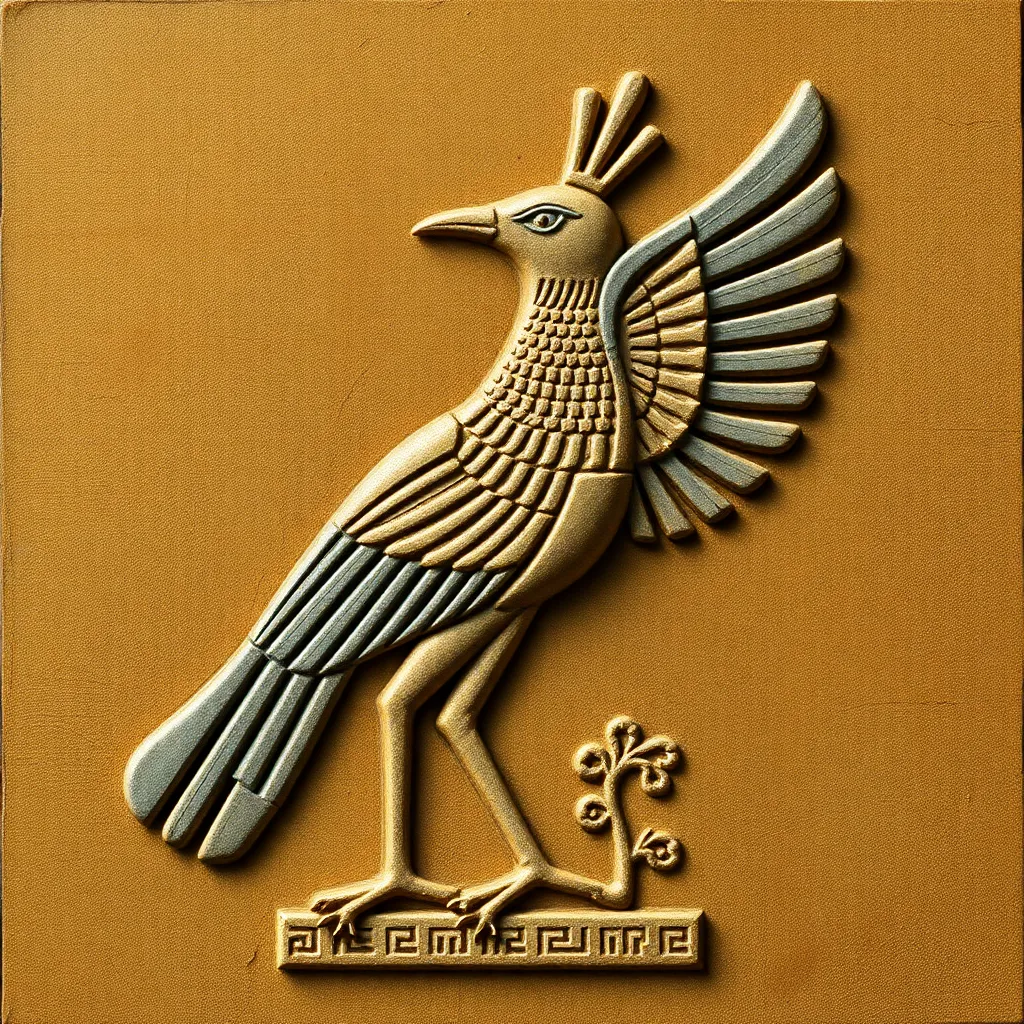The Bennu Bird: A Symbol of Resilience in Egyptian Culture
I. Introduction
The Bennu Bird holds a significant place in Egyptian mythology, often regarded as a symbol of rebirth and resilience. This mythical creature, frequently associated with the sun god Ra, embodies the themes of renewal and transformation that are prevalent in ancient cultures. In this article, we will explore the origins, symbolism, and cultural impact of the Bennu Bird, shedding light on its place in Egyptian mythology and its relevance to modern society.
II. Mythological Origins of the Bennu Bird
The mythological origins of the Bennu Bird are deeply rooted in ancient Egyptian texts and lore. Historical references can be found in the Pyramid Texts and the Coffin Texts, where the Bennu is often depicted as a phoenix-like bird, emerging from ashes or a sacred fire.
One of the key connections of the Bennu is with the sun god Ra. The Bennu is said to represent the creative force of the universe and is closely linked to the sun’s cycles, symbolizing the eternal nature of life and death.
Moreover, the Bennu is associated with creation myths, particularly the story of the world’s creation from the primordial waters of Nun. The bird is believed to have emerged from the ben-ben stone, a symbol of the sun and creation, signifying the start of life itself.
III. Physical Description and Symbolism
The Bennu Bird is often described in Egyptian art as a heron or a stork, with striking plumage and a long neck. Some depictions show it adorned with a double crown, symbolizing its connection to both Upper and Lower Egypt.
The symbolism of the Bennu extends beyond its physical appearance. It embodies the themes of rebirth and renewal, akin to the cyclical nature of life. Each time the Bennu rises from its ashes, it serves as a reminder of the possibility of new beginnings.
Additionally, the Bennu plays a crucial role as a guide for the deceased. In funerary texts, it is often depicted leading the souls of the departed through the afterlife, ensuring their safe passage and rebirth in the realm of the gods.
IV. The Bennu Bird in Art and Hieroglyphics
The representation of the Bennu Bird in Egyptian art is both varied and significant. Artists often portrayed the bird in temple reliefs and tomb paintings, highlighting its majestic form and sacred nature.
In hieroglyphics, the Bennu is used as a symbol of resurrection and is often associated with the word for “soul.” Its depiction in religious texts underscores its importance in the afterlife beliefs of the ancient Egyptians.
The influence of the Bennu Bird extends beyond Egyptian culture, inspiring various representations of resilience in other civilizations. The image of a bird rising from flames has permeated art and literature throughout history, symbolizing hope and renewal.
V. The Bennu Bird and the Cycle of Life
The Bennu Bird is intrinsically linked to the natural cycles of life, particularly the annual flooding of the Nile River. This flooding was vital for agriculture, replenishing the soil and ensuring bountiful harvests.
Seasonal cycles are mirrored in the Bennu’s symbolism, as it represents the connection between death and rebirth. Just as the Nile brings life to the land, the Bennu signifies the promise of renewal and the continuity of life.
Furthermore, the Bennu serves as a metaphor for life’s challenges and triumphs. Its ability to rise from ashes resonates with the human experience of overcoming adversity and embracing new beginnings.
VI. Modern Interpretations and Cultural Impact
In contemporary contexts, the Bennu Bird continues to inspire artists and writers. Its image appears in various forms of art and literature, symbolizing hope and resilience in the face of adversity.
For many Egyptians, the Bennu has become a symbol of national identity and unity. It represents the enduring spirit of the people and their ability to rise above challenges, reflecting the broader themes of resilience found in modern society.
Globally, the concept of the Bennu Bird has influenced ideas of resilience and rebirth, serving as a powerful archetype in narratives about overcoming struggles and emerging stronger.
VII. Lessons from the Bennu Bird
The story of the Bennu Bird imparts valuable lessons about overcoming adversity. Its journey from ashes to flight serves as a reminder that renewal is possible, even in the darkest of times.
In today’s society, resilience is more important than ever. The ability to adapt, learn, and grow from challenges is a vital skill that can lead to personal and communal growth.
Embracing the mindset of renewal and hope, as embodied by the Bennu Bird, can empower individuals to face their own challenges with courage and determination.
VIII. Conclusion
In conclusion, the Bennu Bird holds a profound significance in Egyptian culture as a symbol of resilience, rebirth, and hope. Its mythological origins, physical symbolism, and cultural impact illustrate the timeless relevance of the themes it represents.
As we reflect on the lessons of the Bennu, we are reminded of the universal nature of resilience and the potential for renewal in our lives. Let us embrace the spirit of the Bennu Bird, finding strength in adversity and hope in every new beginning.




